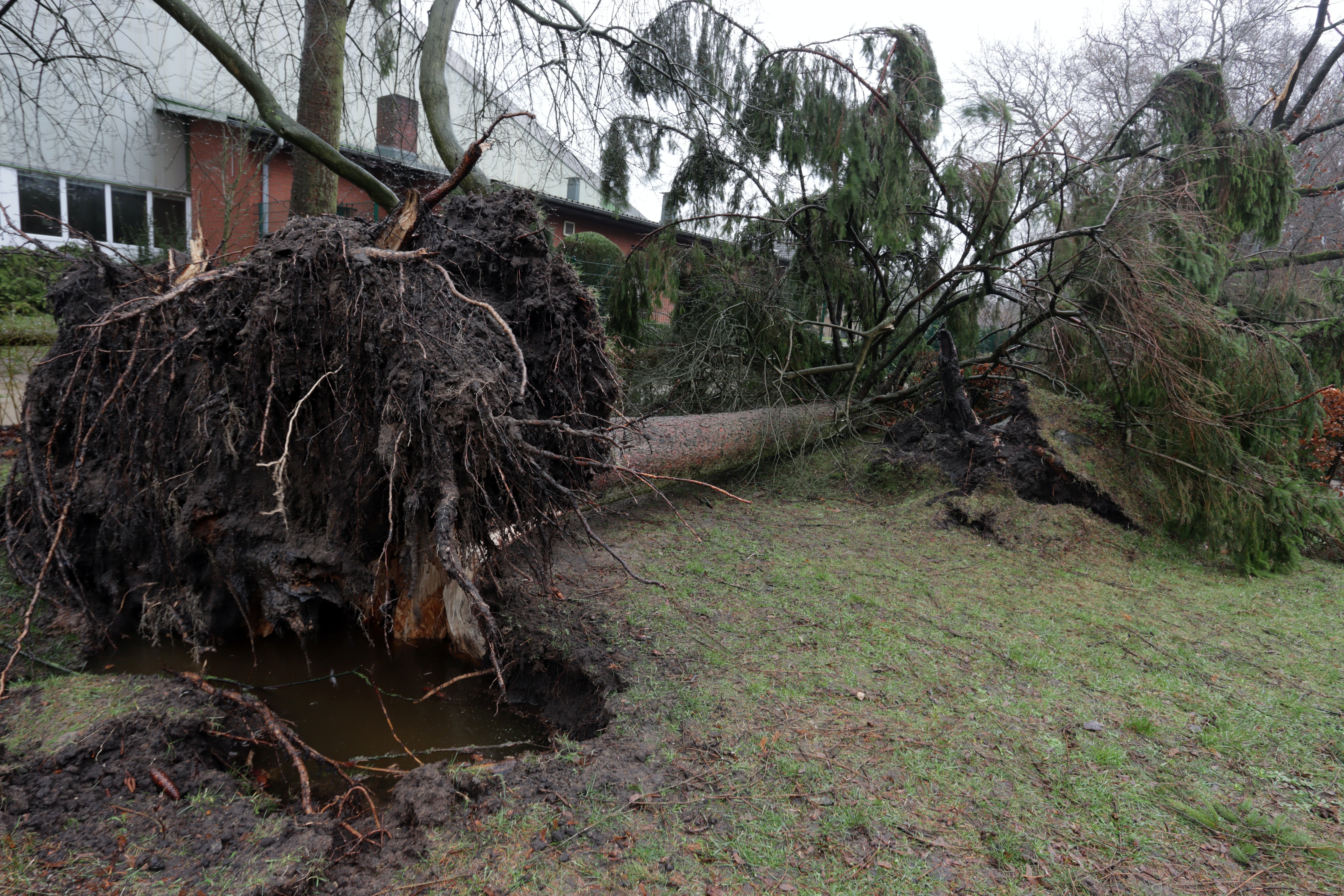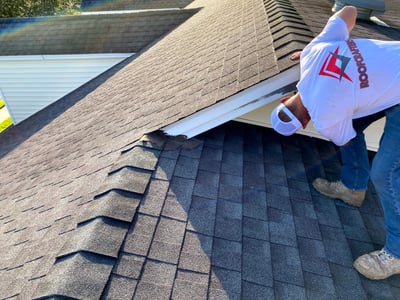Hurricane Straps: Benefits, Installation Tips, and Cost Breakdown
July , 2024 | 8 min. read
By David Toth

Ah, hurricane season. That time of year when we Floridians start praying to any deities that our roofs don't end up in the neighbor's yard. Sure, we usually love the sunshine state, but let's face it, we're not exactly immune to Mother Nature's tantrums from June through November. So, what's a homeowner to do? Enter hurricane straps: These bad boys are the seatbelts of your house, keeping everything in place when the winds start howling like a ferocious canine. Alexa, play "Hungry Like a Wolf by Duran Duran".
At RoofCrafters, we’re located in the southeastern states of the US that face the brunt of these storms, and we know that the wrath of hurricane season can be unbearable. We’ve seen the worst of the worst when it comes to roof damage due to these psycho-cyclones, but we also know that hurricane straps are installed well before any rumor of a storm, which will save not only your roof but also your entire home.
That being said, if you’re reading this article, you’ve probably got a few questions about hurricane straps and whether or not they're worth their weight in steel. It’s a good thing you’re here because, in a few short moments, you’ll learn what exactly a hurricane strap is, the most common types, how much they cost, and their installation method. Let’s get started, shall we?
Understanding Hurricane Straps: Purpose and Function

Hurricane straps, also known as hurricane ties or clips, are critical components in building construction, especially in regions susceptible to high winds and hurricanes. These metal connectors, typically made from galvanized steel, are designed to anchor the roof of a building to its walls, significantly enhancing the structural integrity of the structure during severe weather events.
Purpose of Hurricane Straps
The primary purpose of hurricane straps is to:
1. Provide Additional Resistance: They help to resist the uplift forces caused by strong winds, which can otherwise lift the roof off a building.
2. Improve Structural Integrity: By securing the roof to the walls, hurricane straps ensure that the building remains intact during a storm, reducing the risk of extensive damage.
The Function of Hurricane Straps
Hurricane straps work by creating a secure connection between various parts of the building's framework. They help to distribute wind loads more evenly across the structure, reducing the pressure on any single component. Proper installation is essential to maximize their effectiveness, which is why professional installation is recommended to ensure they are placed and secured correctly. Avoid the DIY on this one, Dad!
Types of Hurricane Straps: Which Ones You Need
Several types of hurricane strap varieties are designed to provide different levels of support and reinforcement for various parts of a home's structure. Here are some of the most common types of hurricane straps:
Rafter-to-Top-Plate Straps: These straps are used to secure the roof rafters to the top plate of the wall. They are typically installed at an angle to provide added resistance against uplift forces during high winds.
Truss-to-Top-Plate Straps: Similar to rafter-to-top-plate straps, truss-to-top-plate straps are used to secure the roof trusses to the top plate of the wall. They are also installed at an angle to provide added resistance against uplift forces.
Ridge Straps: Ridge straps are installed at the peak of the roof to provide additional support and prevent the roof from separating from the walls during high winds.
Tension Tie Straps: Tension tie straps are used to secure the walls to the foundation of the home. They are typically installed diagonally and provide resistance against lateral and uplift forces.
Sheathing Clips: Sheathing clips are installed between the roof sheathing and the rafters or trusses to provide added resistance against wind uplift.
Continuous Load Path Systems: Continuous load path systems involve a combination of different types of hurricane straps and connectors that create a continuous load path from the roof to the foundation of the home. This type of system provides the highest level of reinforcement and protection against wind damage.
What Your Wallet Can Expect
The cost to install hurricane straps on an average-sized home can vary depending on a few factors, including the location of the home, the type and size of hurricane straps used, and the cost of labor in the area.
As a rough estimate, the price to install hurricane straps on an average-sized home can range from $500 to $2,500 or more, with an average cost of around $1,000 to $1,500. This cost may include the cost of materials, labor, and any necessary permits or inspections, which when it comes to saving your roof, the pros outweigh the cons, here.

Keep in mind that the cost can vary significantly based on the specifics of your home and location, and it is recommended to obtain a quote from a licensed and experienced contractor in your area to get a more accurate estimate.
.jpeg?width=400&height=216&name=storm%20damaged%20(1).jpeg)
Additionally, some insurance companies offer discounts on homeowners insurance premiums for homes with hurricane straps or other wind-resistant features, so it may be worth considering the long-term benefits of investing in hurricane straps for your home
Installing Hurricane Straps: Step-by-Step Guide
The installation process for hurricane straps can vary depending on the specific type of hurricane straps being used, the size and structure of the home, and local building codes. However, here is a general overview of the steps involved in installing hurricane straps:
Inspection: The first step in installing hurricane straps is to inspect the existing roof to determine where the straps will need to be installed. This involves examining the framing of the roof, walls, and other structural elements to identify areas that may be vulnerable to high winds.

Preparation: Before installing hurricane straps, it is important to prepare the area by removing any debris or obstacles that may interfere with the installation process.
Installation: The installation process typically involves the following steps:
- Anchor bolts are used to secure the wall framing to the foundation of the home. The bolts are drilled into the foundation, and then the wall framing is bolted to the anchor bolts using metal connectors.
- The straps are then attached to the roof framing and wall framing using nails or screws. The straps are designed to wrap around the framing members and provide a secure connection that can withstand high winds.
- Once the hurricane straps are in place, the roof sheathing can be installed over them. This helps to reinforce the roof and provides an additional layer of protection against wind damage.
Benefits of Hurricane Straps for Homeowners
Investing in hurricane straps has many benefits for homeowners. These are especially true in regions prone to severe weather. Here are some key advantages:
1. Enhanced Safety: Hurricane straps significantly improve the structural integrity of your home, reducing the risk of roof detachment during high winds. This added safety can protect both your property and your family.
2. Insurance Premium Discounts: Many insurance companies offer discounts on homeowners insurance premiums for homes equipped with hurricane straps. This can lead to substantial long-term savings.
3. Increased Property Value: Homes with hurricane straps are often seen as more desirable by potential buyers, increasing your property’s market value.
4. Compliance with Building Codes: Installing hurricane straps ensures that your home meets local building codes and regulations, which can be crucial during the sale of the property or when applying for permits.
5. Peace of Mind: Knowing that your home is fortified against severe weather can provide peace of mind, allowing you to focus on other important aspects of your life.
Do You Need Hurricane Straps for Your Roof?
Hurricane straps are an essential component of any home located in hurricane-prone areas or other regions that experience high winds. By reinforcing the structure of your home and providing added resistance against uplift and lateral forces, hurricane straps can help to prevent damage and ensure the safety of your cozy residence and most importantly, your family.
As you now know, there are several types of hurricane straps available, each designed to provide different levels of support and reinforcement for different parts of the home. Once more, don't DIY it! It's important to work with a licensed and experienced contractor to ensure that hurricane straps are installed correctly and in compliance with local building codes and regulations.
With proper installation and maintenance, hurricane straps can provide long-lasting protection and peace of mind for homeowners in areas prone to hurricanes. If you’re interested in speaking to a professional about hurricane protection, be sure to hit the “schedule an inspection” button down below, and one of our experts will contact you.
My name is David Toth and I am the lead estimator in North Florida with RoofCrafters Roofing. Originally from New Brunswick, I have called Florida home for the past 47 years. I enjoy cooking along with traveling to different historical areas in Florida when I have free time.



